Leaving Is Not an Option! 6 Things Delhi Residents Must Do Now to Fight Pollution
Doctors have advised parents in Delhi-NCR to leave the city because of intense air pollution. But not everyone has that luxury. Here are some steps residents and policymakers can take to make Delhi's air more breathable.
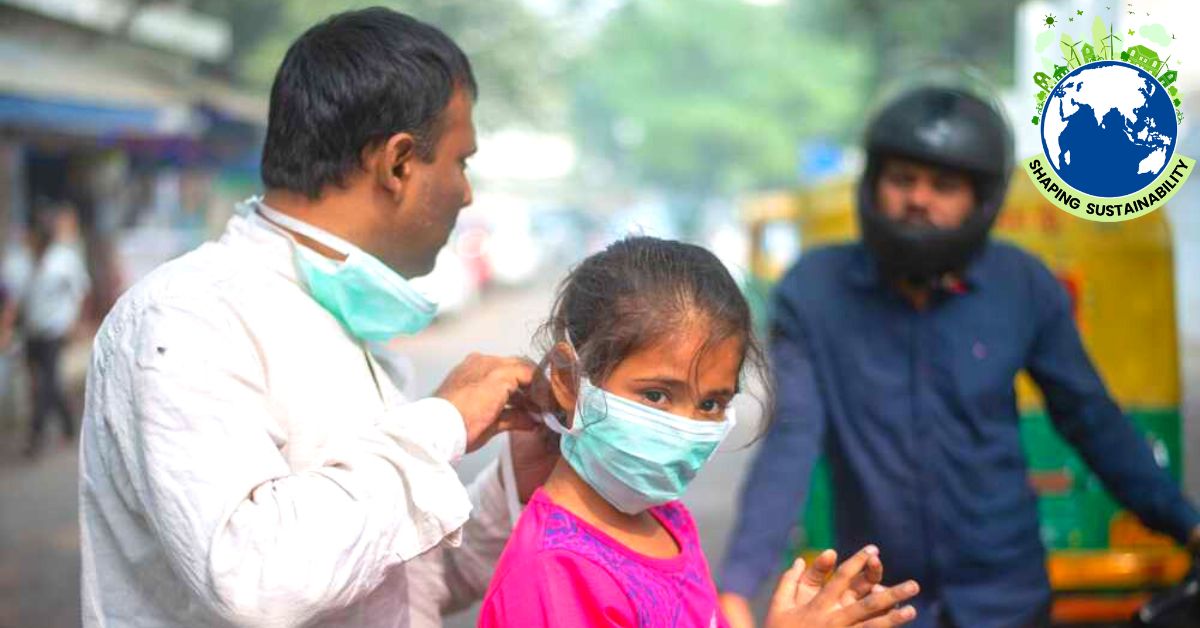
There is a public health emergency in the national capital and its surrounding regions. People are dying and suffering from a variety of health complications as they struggle to breathe the city’s toxic air.
On the morning of 7 November, 2023, the average 24-hour air quality index (AQI) in the national capital stood at a shocking 394 on a scale of 500, according to this Press Trust of India (PTI) report. This was a marginal improvement from the 421 recorded on the evening of 6 November at 4 pm. A healthy AQI is below 50.
Despite the marginal improvement in AQI, the concentration of PM 2.5 (fine particulate matter capable of devastating the human respiratory system) has exceeded the safe limit of 60 micrograms per cubic metre prescribed by the Central Pollution Control Board (CPCB) by a staggering seven to eight times, according to PTI.
We must find solutions to make Delhi’s air more breathable. Going sector by sector, here’s what policymakers and especially residents must do in the immediate and long term.
Replacing old vehicles with new ones
Transport is among the largest sources of air pollution in Delhi. Multiple studies show varying figures for how much the transport sector contributes to Delhi’s polluted air, but the range lies between 20 percent to 40 percent. Within transport, some sources contribute more than others.
“Within this sector, there are primarily two sources — emissions from the vehicle itself and its contribution to re-circulating road dust, which contains vehicular exhaust, heavy metals, etc. If you look at any report, especially for PM 10, you’ll find that 50 to 60 percent is road dust. See, road dust by itself is not toxic. What makes road dust toxic is when it’s combined with other sources of emissions, especially fine particulate dust from vehicular emissions. In terms of exposure, it’s very dangerous because all of us use roads daily,” Polash Mukerjee, lead at Air Quality and Climate Resilience, Natural Resources Defense Council (NRDC) tells The Better India.
As Polash explains, “The commercial vehicle segment, on a per-unit basis, contributes much more to pollution than privately owned individual vehicles. This is purely down to the usage factor. On average, a private car will travel 20 to 30 km a day in Delhi as compared to a taxi, bus, truck or light commercial vehicle which may travel up to several hundred kilometres in the city. We also know that commercial vehicles, as a result of their higher usage, are not always as well maintained as private vehicles. Given the vehicle ownership patterns in India, their (commercial vehicles) average lives are much longer. This segment of vehicles within the transport sector contributes most to Delhi’s air pollution problem.”
This segment needs to be prioritised at the earliest. Within the transport sector, there are a couple of ways to reduce the overall contribution to pollution — make each vehicle more efficient and cleaner, reduce their pollution output, and lessen the number of individual vehicles running in Delhi-NCR.

A large factor to consider here is the Bharat Standard (BS) III, IV, V and VI emission standards for Internal Combustion(IC)-engine vehicles. These are government-instituted emission standards (updated every few years) that all motor vehicles have to comply with if they are to be sold and driven.
“We are focussing on these emission standards and their generations because there is a huge difference between a BS-IV and BS-VI vehicle. From BS-IV to BS-VI for a commercial diesel vehicle, the particulate matter generation per unit/km goes down up to 90 percent. It’s the same thing across the board for other lubricants,” explains Polash.
Polash notes that introducing BS-VI norms has rendered the Pollution Under Control (PUC) certificate regime obsolete. BS-VI has more stringent emission reductions in PM 2.5, sulphur, and NOx compared to BS-IV. More importantly, the BS-VI standards emphasise the overall health of the vehicle. Onboard Diagnostics (OBD) has been made compulsory for all vehicles.
In newer vehicles, a check engine light is actually connected to the OBD indicator. With the OBD-based mechanism, the vehicle will be connected to a computer, and there is a diagnostic mechanism to check whether all its components are functioning properly or not. Through this mechanism, a fitness report of your vehicle will be generated.
“The system is now transitioning to a more centralised and automated testing mechanism. There will be a gradual transition to mandatory fitness testing for all vehicles. Unlike the PUC system, this will be a thorough check of its components including the functioning of various parts, emission control systems on board, amongst others,” says Polash.
“Unfortunately, there are only three or four such centres in the Delhi-NCR region. At a national level, we barely have about 10 to 12 such centres. One of the biggest centres in Delhi can process about five vehicles simultaneously per day.”
To fulfil Delhi’s needs, massive human resources or technology is needed.
On the ground, when the traffic police catch a vehicle emitting black smoke, all they have to go by is the PUC certificate. For all you know, that certificate could be fake. The traffic police department could implement a hand-held OBD reader that tells cops whether the vehicle’s systems are performing at an optimal level.
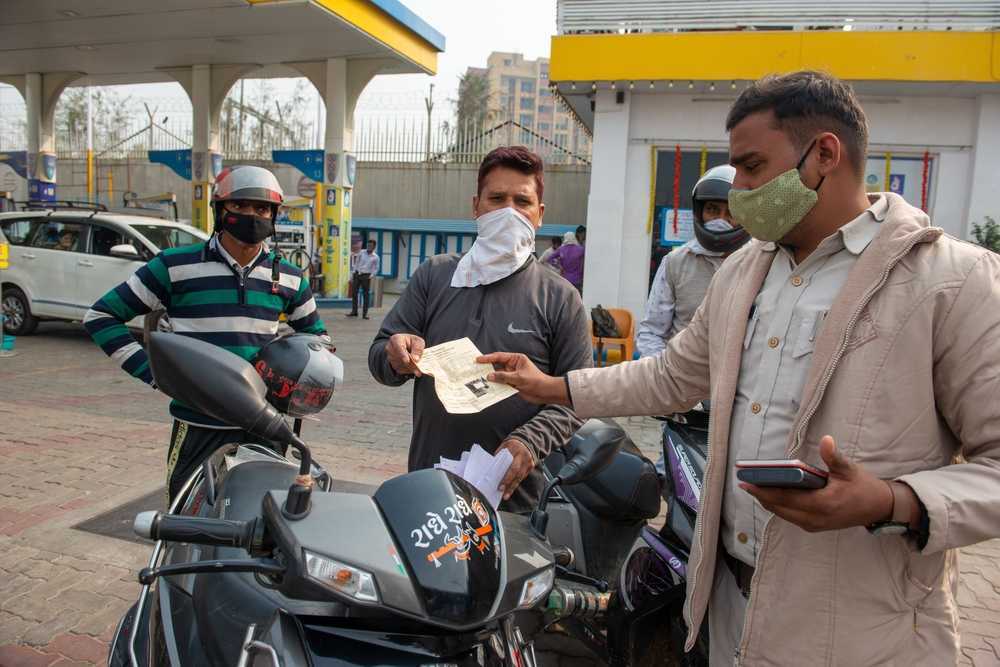
Meanwhile, as individual car and bike owners, you could take steps like servicing your vehicle regularly and avoid buying aftermarket parts like exhausts that bypass emission control systems.
You can also make more effective choices when picking the next vehicle to buy. Modern vehicles are better than older ones, and now you have electric vehicles to choose from as well. On average, a car is used for eight to 10 years in India. So, one good choice of vehicles can positively impact pollution levels.
Meanwhile, on a policy level, the Central and State/local governments can immediately take commercial vehicles that adhere to older emission standards like BS II, III and IV off the roads as soon as possible. Low-emission alternatives like EVs should replace them, but even a BS-VI would be a much better option than these old vehicles. This should be the top priority.
Segregating waste should begin at home
According to Chintan Environmental Research and Action Group, a Delhi-based non-profit, there were 11 landfill fires reported between 2017 and 2021. This year we have witnessed a further two fires, with the latest one in the Bhalswa landfill lasting for more than a week.
Why do these landfills catch fire?
It all begins when organic (wet or kitchen waste) is irresponsibly dumped into a landfill, which starts putrefying. This generates methane, a toxic gas which combusts and results in — what Bharathi Chaturvedi, the Founder and Director of Chintan calls — a “hot, transparent fire” in a recent column for The Quint.
As this explainer by Chintan notes, “Inefficient waste management through landfills and biomass burning creates methane, a climate-damaging, highly combustible gas that ignites fires that spew particulate matter.”
Likely emissions from such fires also include dioxins, which rank among the most toxic human-made chemicals. Once again, the type of emissions depends on what catches fire, including volatile organic compounds, heavy metals, acids, etc. However, what consistently happens is that emissions generated by these fires poison the lives of people living in the vicinity of landfills and the rest of Delhi-NCR, depending on wind speed and direction.
As per the Solid Waste Management Bylaws for Delhi, notified in 2018, the onus of waste segregation into wet waste, dry waste and domestic hazardous waste was on individual households who generate it. Those found not complying are liable to pay a fine of Rs 200. However, according to a 2021-21 Economic Survey of Delhi, barely 32 percent of the city’s wards engage in waste segregation at the source. The law is clear on landfills. Only inert waste can be dumped in it, but the reality on the ground is much different.
While institutions like the Indian Institute of Technology, Delhi, which sends less than 10 percent of their waste to landfills, and areas like Palam where residents engage in segregating their waste and home composting, have set good examples, these are too few and far between. In her column, Bharathi argued that “less than 20 percent” of the waste generated in a given ward should be allowed to leave.
This has to change because they are damaging their health and those of residents living near these landfills like waste pickers. When dumps in places like Ghazipur or Okhla catch fire, they suffer from acrid smoke and breathe in all that poison directly.
What are the solutions to lessening the size of our landfills and ensuring that they don’t catch fire? As Bharathi notes, ideally, neighbourhoods or colonies should collectively manage all their organic waste, decentralise the process of waste management, and receive a subsidy from the municipality that can be pegged to their property tax rate or some other metric.
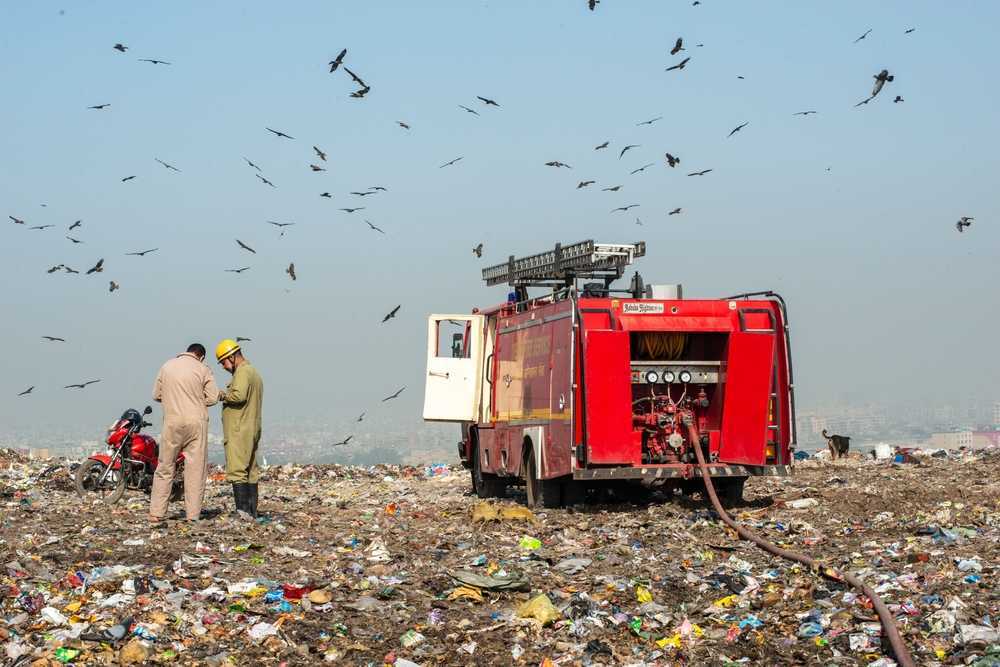
Of course, the subsidy amount can lessen as we move into wealthier neighbourhoods, and such schemes should also include unrecognised or ‘unauthorised’ slums. On the other hand, it’s true that no neighbourhood can absorb everything that it composts. For this, the Delhi government or municipal corporations could establish a ‘buy-back’ programme of sorts where they can buy the compost generated at pre-agreed quantities and fixed rates.
The idea here is to encourage people to change their behaviour and incentivise them to compost organic waste, including leaves. Assisting this process, you also need fruit and vegetable markets (mandis) in the city that require assistance in “closing the loop” by further “consolidating their existing linkages with cow sheds (gaushalas) and via composting.”
Delhi residents also have to lessen the use of plastic in everyday life, especially when buying groceries and other items. Certain stakeholders have posited that waste-to-energy (WTE) plants (burning plastic and other waste) present a more eco-friendly alternative to landfills. This is simply not the case given the lack of safety, inefficiency and high amount of pollution generated by these WTEs given how we put mixed waste, including organic waste, into these plants.
Another solution is bioremediation, “a process that uses mainly microorganisms, plants, or microbial or plant enzymes to detoxify contaminants in the soil and other environments”, and biomining (an eco-friendly “technique of extracting metals from ores” and “other solid materials like waste using microorganisms”) of landfills, besides methane and leachate management.
Media reports indicate that the Ghazipur landfill site in east Delhi has legacy waste amounting to 140 lakh metric tonnes. Given the municipality processes about four lakh tonnes of waste per year through processes like biomining, it could take more than three decades to process it.
There are question marks about whether our municipalities are up to the task. A possible solution to enhancing capacity is greater coordination between the municipalities, State government and the Central Government, and the formulation of a coherent and strategic plan to introduce systemic change. But solid waste management is one area where individual responsibility can go a long way in determining larger outcomes.
Finally, as residents, you can and must report those flouting the rules while also assisting those who can’t help themselves. As this Chintan explainer notes, “For example, if your neighbourhood security guard has to burn waste on a winter night, help get a better watch booth, warm clothes and an electric ‘hot water bottle’.”
Being smarter in consuming electricity
In 2015, the Union Ministry of Environment, Forest and Climate Change (MoEF&CC) introduced a notification directing coal-based thermal power plants (TPP) to comply with stringent emission norms. This was the first notification which asked power plants to regulate emissions of sulphur dioxide (SO2) and oxides of Nitrogen (NOx). Before this 2015 MoEF notification, India only had PM (particulate matter) emission standards that were very relaxed.
The deadline to meet these 2015 standards was initially set as December 2017. Since then, there has been a constant push from the power sector to delay the deadline. Eventually, the deadline for power plants in the vicinity of the Delhi-NCR to meet these stringent norms was pushed to 2019, but only one of them followed through. The rest were given another extension till 2022, but the Ministry of Power has sought a further extension of another two years.
“Technically, there are 12 power plants within an approximately 300 km radius of Delhi. Of the 12, only the Mahatma Gandhi Super Thermal Power Project in Jhajjar, Haryana, owned by the CLP Group, has installed pollution control devices. Whether these devices are being operated or not remains a question. A couple of units have done the same in the Dadri Power Plant, Uttar Pradesh, which NTPC owns. Otherwise, none of the other power plants has installed flue gas desulfurisation (FGD) units which are a set of technologies used to remove sulphur dioxide from exhaust flue gases of fossil-fuel power plants,” Sunil Dahiya, an analyst with the Centre for Research on Energy and Clean Air (CREA), tells The Better India.
The contribution of thermal power plants to Delhi’s air pollution varies daily because of the winds and the capacity at which they are operating. That contribution varies from four percent to up to 25 percent on certain winter days when the wind is coming into Delhi from the Haryana-Punjab side where most of the power plants are located.
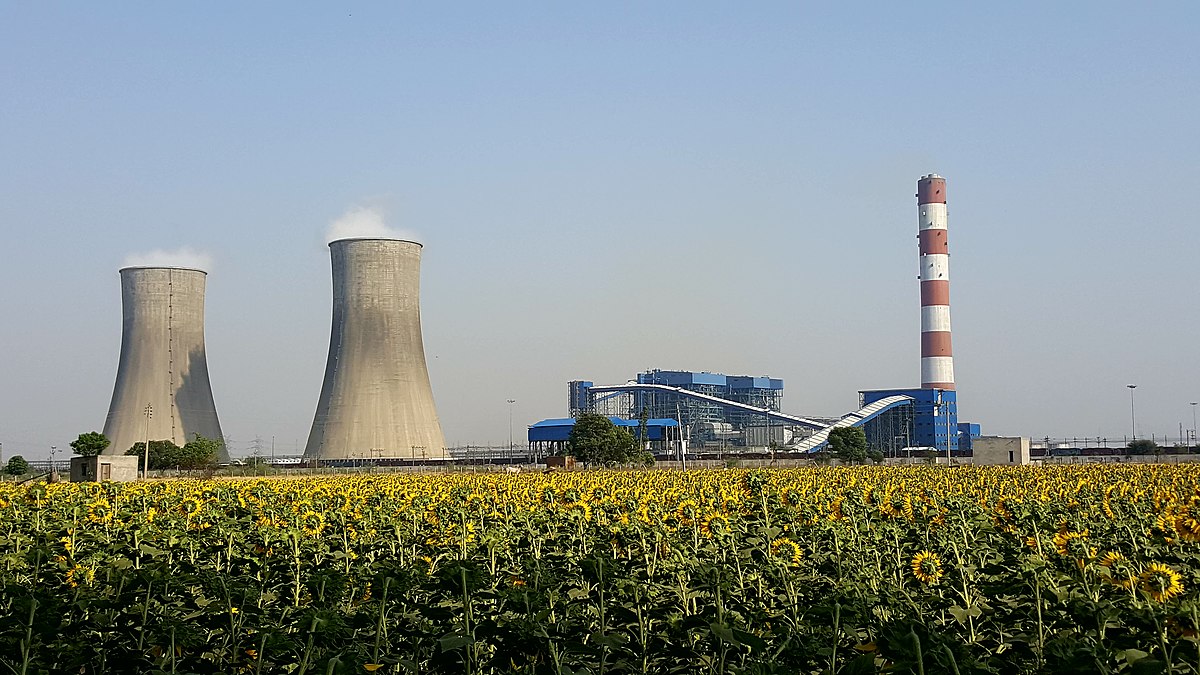
“One of the main findings of the 2021 CREA report on coal-based power is that there will be 218 calculated deaths annually in Delhi because of the operation of these 12 power plants. Also, if you consider the broader Delhi-NCR districts, it will be 682 deaths annually. Also, this pollution doesn’t subside or settle down within this 300 km radius and travels to Uttar Pradesh, Bihar and even West Bengal. If we can take into account all these regions, there will be 4,800 deaths annually as a result of these 12 power plants remaining operational,” claims Sunil.
To understand the importance of installing pollution control devices, he highlights the difference between the TPP in Jhajjar and Talwandi, Punjab, which also supplies power to Delhi. “The one in Jhajjar, which has the SO2 emission control system in place, the emission of SO2 per unit of electricity generated was about 0.75 gm. The Talwandi power plant in Mansa district was emitting 5.13 gm of SO2 per kWh — eight times the SO2 emission,” he adds.
We talk about SO2 more prominently because this reacts with other pollutants in the atmosphere and forms a significant part of secondary PM 2.5 emissions. The total pollution emission load from a thermal power plant happens in the form of NOx, SO2 and PM 2.5.
“If we calculate the total PM 2.5 emissions, both primary and secondary, then we find that about 96 percent of the total PM 2.5 contributed by the power plants is because of secondary PM 2.5. If you’re just controlling particulate matter from a power plant that may not make much of a difference. But controlling the SO2 and NOx emissions will make a real difference,” says Sunil.
Is Delhi getting its electricity only from these 12 thermal power plants? No, the city also gets its electricity from power plants in Madhya Pradesh and other states as well. If we have to clean Delhi’s electricity supply chain, we will have to talk about power plants beyond Delhi-NCR.
When it comes to regulating emissions, the responsibility lies with the given State pollution control board. All these state pollution boards come under the Central Pollution Control Board (CPCB). Since pollution is not a state subject and pollution travels to different states, the CPCB has authority over these State pollution control boards and can issue directions to them. Most of the emission norms are tracked or regulated by the CPCB at the Central level.
“The Ministry of Power and Central Electricity Authority (CEA) can play a role in ensuring that these power plants retrofit devices to control pollution. But in the last seven years, we have seen that rather than playing a facilitator role to ensure the implementation of pollution regulation norms, they have always sided with power plants in asking for extensions and delays. At a policy level, we need to ensure that those 2015 norms are implemented as soon as possible without further delay,” he says.
Meanwhile, what can residents of Delhi do in terms of changing their electricity consumption patterns? There are households, government buildings, metro stations, railway stations, and many other public spaces that can install rooftop solar panels. Once they install decentralised solar energy, their dependency on the central grid, where 75 to 80 percent of electricity comes from coal, will reduce.

Another solution is to monitor how much electricity they are consuming. In Delhi, some residents might already be doing it. After all, if you consume more than 200 units a month, you’ll be charged. If your consumption is below 200 units, you’ll get free electricity. Not everyone knows how much electricity they are consuming, and thus there is a lot of wastage that goes into lighting, cooling, water pumping, etc. Residents must do better not to waste electricity.
Also, buildings in Delhi-NCR need to be constructed in a way where they need minimum external heating or cooling and are energy efficient. “This will require a reform of building construction norms and codes. Energy-saving and changes to your lifestyle at the individual household level, besides the transition to renewable energy, will help reduce the burning of coal in Delhi-NCR or elsewhere, and thus reduce pollution levels,” he adds.
Setting stringent guidelines for the construction industry
When it comes to the construction industry, the main source of pollution is the re-suspension of dust. This is construction dust, which may contain cement particles, metals, debris from demolition and those kinds of elements as well. This is particularly toxic to those working on the construction site and also contributes to wider ambient particulate matter levels. Some reports estimate that construction dust contributes as much as 30 percent to Delhi’s pollution.
There is also a secondary source of pollution emanating from the construction industry. Many of the informal construction workers, especially women and younger children, are exposed to a secondary source by burning solid fuel in their makeshift campsites. They live in makeshift camps close to construction sites and use the cheapest available fuel, often firewood. If you talk about wider sources of air pollution at a national level, then these solid fuels come up very high in the list of contributors.
In Delhi, for large construction sites above 20,000 square feet, the state government has to ensure compliance. Anything less than 20,000 square feet, it’s the municipal corporation’s responsibility. Other experts contend that neither body has an adequate workforce nor developed any mechanism to ensure compliance.
Polash recommends using low-cost sensors that can be used as an effective tool for real-time air quality measurement on construction sites. But how can we ensure compliance?
“When you start a construction project, among the many permits required, you need the consent of the concerned pollution control board or the municipal corporation. The conditions of that consent should include this clause of self-monitoring and self-reporting. In other words, the onus of compliance here is on the polluter and not the regulator,” he notes.
On the individual level, mechanisms for citizen reporting need to be strengthened. In a city like Delhi, you see many smaller construction projects. Many of them leave loose sand dumped on the pavement or facilitate the movement of trucks without covering the material or debris.
As per the rules, any large construction site should have dust barriers in the form of tall or thin metal sheets or a green net structure. On a material level, the rules are specified as all construction material, including the debris from demolition, should be covered while in storage and during transportation. Similarly, any movement of vehicles, especially trucks carrying material, has to be done while it’s covered. When a truck is leaving the site, the truck’s body and wheels, covered in dirt and dust, have to be washed off before it exits and when it enters. Right now, a lot of these violations go unseen.
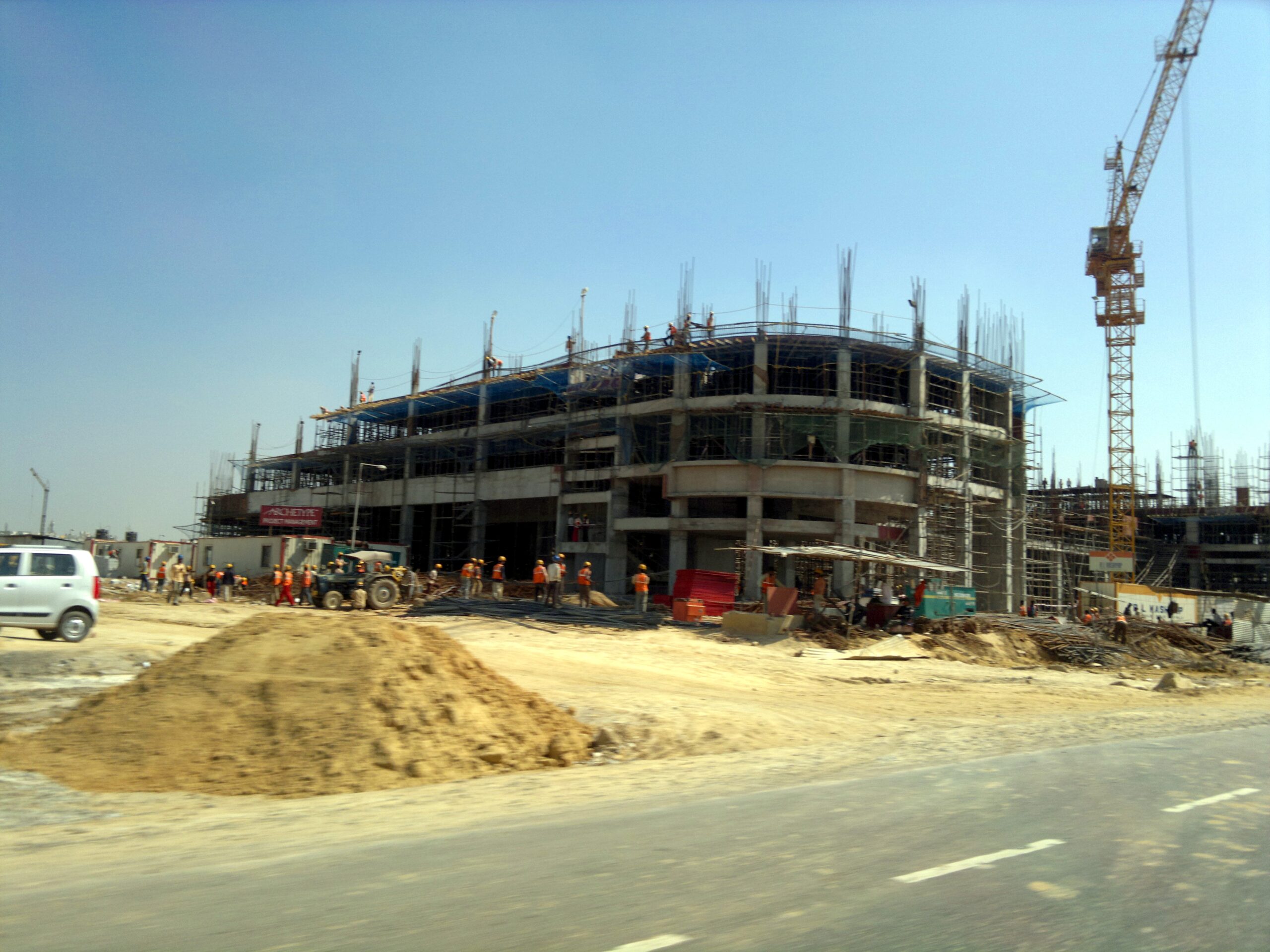
Moving away from diesel-powered gensets
Diesel emissions are highly toxic. Diesel emissions have been categorised as a Type 1 carcinogen by the WHO, which means they are proven to be cancer-causing emissions.
“There are large users in Delhi-NCR that use diesel gensets regularly like large factories, commercial establishments, hospitals, apartment complexes, etc. Why would anyone use diesel gensets if they have a stable electricity connection? Industries often use this to keep their electricity generation off the books. They can show lower production and escape the tax net. Also, larger diesel gensets can utilise dirtier fuels like furnace oil. Diesel is a fairly refined fuel, relatively speaking. Other fuels are dirtier, less refined, and cheaper to use,” says Polash.
But sometimes, these diesel gensets are categorised as essential requirements. For instance, in a high-rise building or a large hospital, you need to have the lift connected to a genset because it’s a matter of safety. The solution here is two-fold:
1) Demand reduction: You reduce the demand for diesel gensets by shoring up the electricity supply and ensuring fewer cuts.
2) Modernise your genset technologies: It’s imperative to make them more efficient and move away from diesel-based generators to more renewable alternatives. Both of these things have happened in Delhi-NCR to some extent.
“Earlier this year, the environment ministry issued a new set of emission standards for diesel gensets. However the implementation timeline for this is still some years away. Fortunately, in Delhi, there is a slow movement toward natural gas and LPG-based gensets. Also, renewable energy like solar is also an option. I recommend that at least old diesel gensets from the 1980s and ’90s need to be replaced by newer technology. But the most effective solution is to ensure a regular supply of electricity. This is just a matter of governance,” he adds.
Better steps under air quality governance
The problems of industrial air pollution, seasonal causes like stubble burning in Punjab, firecrackers, brick kilns, etc require address at a policy level through air quality governance.
Delhi has the DPCC (Delhi Pollution Control Committee), a state-level body. There are also the state pollution control boards of NCR states (Uttar Pradesh, Haryana, Rajasthan) and Punjab. Above these bodies, you have the Central Pollution Control Board (CPCB).
“What Delhi-NCR lacked for many years was something that brings all these different stakeholders to the same table. CPCB is supposed to be donning that role, but it hasn’t done so for a long time. Post-2019, the National Clean Air Programme was introduced and that has brought in a fresh approach to air pollution, but even that makes the city the only point of action on air pollution. Curiously, for a long time, Delhi was not included in the NCAP,” says Polash.
Towering above them all is the Commission for Air Quality Management (CAQM). Set up in 2019, this commission was set up by the Government of India and the Supreme Court. It is technically on par with bodies like the Finance Commission, which was created by an act of Parliament. “This body has the authority to pull up the Central Government on paper. The role of this commission is to be an apex nodal authority for air quality in the Delhi-NCR region. Ultimately, the buck stops here in terms of air quality governance,” he notes.
However, a better structure would empower State pollution control boards and the CPCB to make decisions without political interference. We need to create a better institutional structure for the functioning of these bodies. Take the example of the United States EPA or the California Air Resources Board, which are largely autonomous and independent bodies.
“Although institutions like the EPA consult all manner of stakeholders, its final decision is relatively free of political interference, which is not the case in India. Here, state pollution control boards are very often caught up in politics. They don’t have a free hand as regulators. This is a crucial bit here because very often, the individuals in these bodies are technically sound and have the wherewithal to act, but they aren’t really decision-makers. They’re following orders from the top. Also, these bodies suffer from a serious shortage of staffing,” explains Polash.
Also, for air quality, the template in countries abroad is to manage it in terms of air quality management district. This is usually an airshed where you establish the influence of emission sources in that particular thing. For instance, crop burning in Punjab influences air quality in not just Delhi but also downhill. Ideally, this should comprise one air quality management zone right from Punjab to Haryana, Delhi and parts of Western Uttar Pradesh.
“There is a need to integrate some of these policies across political boundaries and that’s where an organisation like a CAQM comes in. They have the authority to make these different states sit at the same table, talk eye to eye and build on a coherent policy,” he says.
(Edited by Vinayak Hegde and Pranita Bhat)
Sources:
‘Why reducing size of Delhi’s garbage mountains is easier said than done’ by Abhinaya Harigovind and Abhinav Rajput; Published on 5 May 2022 courtesy The Indian Express
‘Health and Economic Impacts of Unabated Coal Power Generation in Delhi-NCR’ by Centre for Research of Energy and Clean Air; Published on 22 March 2021
‘As Delhi Recovers From Landfill Fire, How to Stop Breathing and Eating Our Trash’ by Bharati Chaturvedi; Published on 10 April 2022 courtesy The Quint
‘Things You Can Do To Prevent Air Pollution’ courtesy Chintan Environmental Research and Action Group
‘At a Glance: WASTE AND AIR POLLUTION’ courtesy Chintan Environmental Research and Action Group
‘Air Pollution in India: Frequently Asked Questions’ courtesy Chintan Environmental Research and Action Group
‘Rain shortfall has kept Delhi’s air ‘poor’ for most of summer’ by Jasjeev Gandhiok; Published on 12 May 2022 courtesy Hindustan Times
This story made me
- 97
- 121
- 89
- 167
Tell Us More
We bring stories straight from the heart of India, to inspire millions and create a wave of impact. Our positive movement is growing bigger everyday, and we would love for you to join it.
Please contribute whatever you can, every little penny helps our team in bringing you more stories that support dreams and spread hope.



















